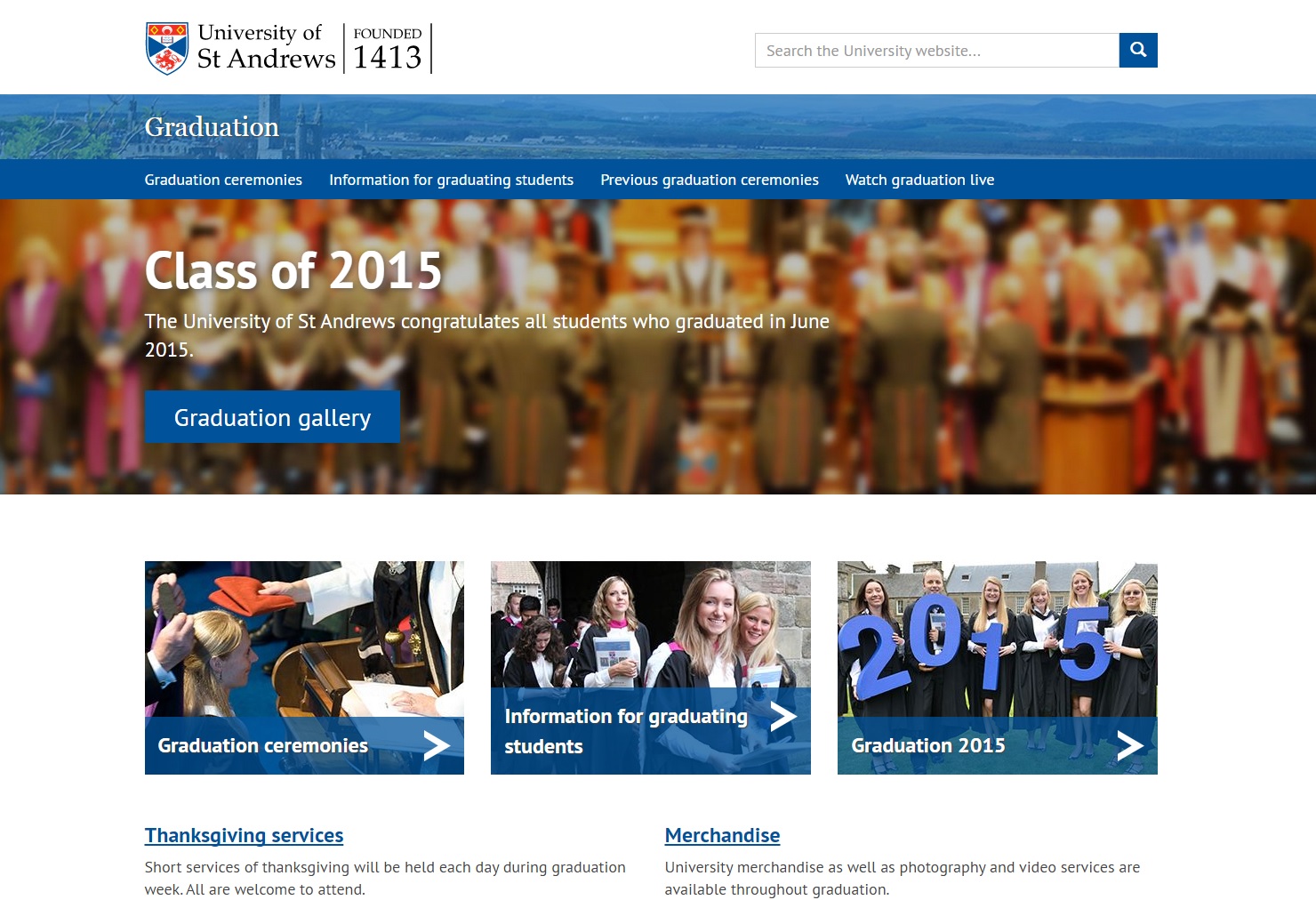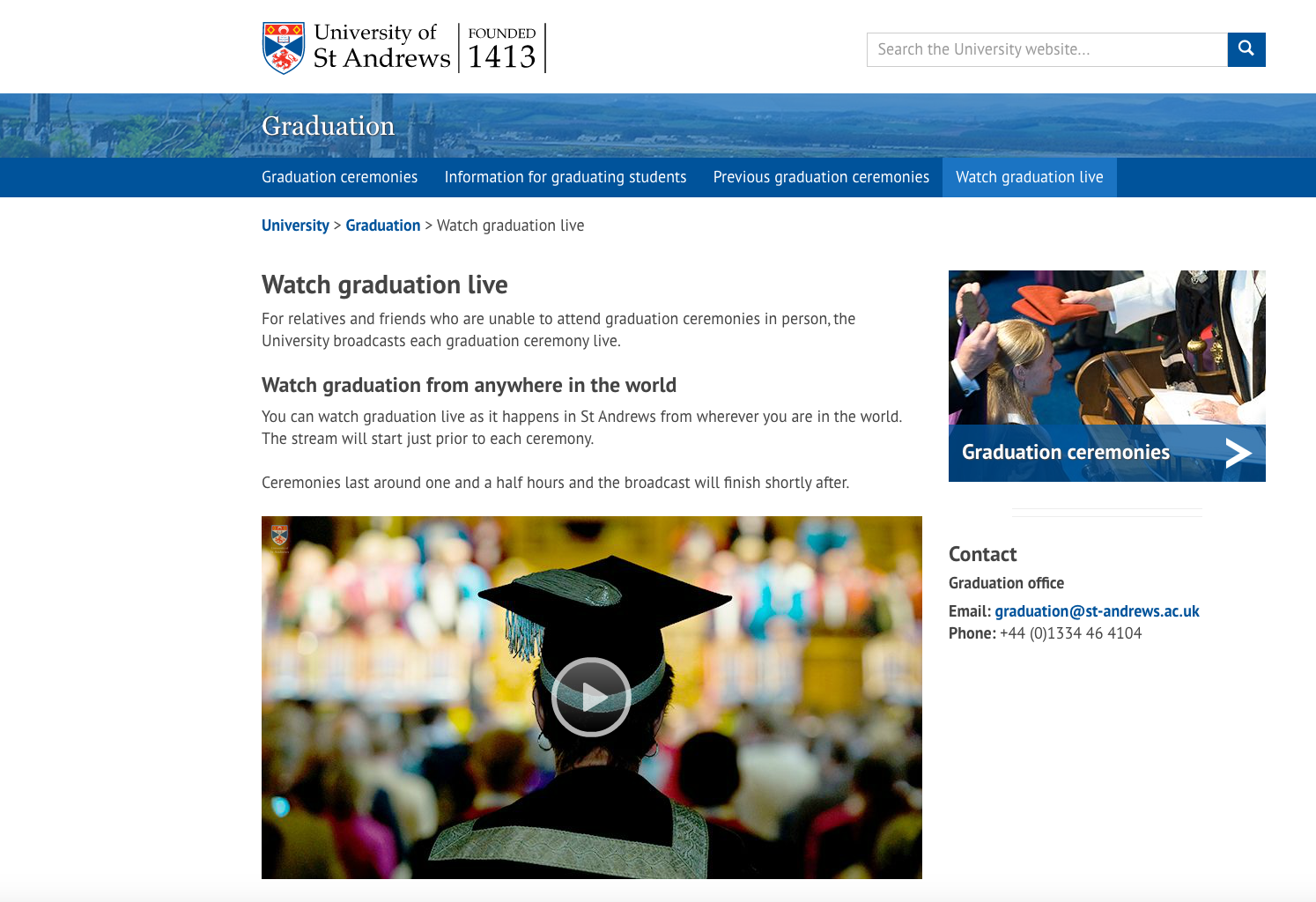The impact of changing the graduation web presence
Back in June, the digital communications team launched a new version of the graduation webpages. The main reason we were so keen to get the graduation website updated was because more and more of the visits to the graduation site during our main graduation period in June were coming from mobile and tablet devices, but the webpages were not optimised with mobile in mind. Looking at the information architecture, the content, and the images which had been historically used, we worked out a short plan to get the content updated and written for the web, a new structure to be implemented and new images to be used. The resulting webpages can be found on the graduation section of the website.
This week, we have taken some time to go through the analytics reports for the month that we launched the graduation pages (which included graduation week, the busiest time of the year for the graduation site) to investigate what impact the new architecture, design and content has had on external user behaviour (so, people outside of the University network). We then compared the data for 2015 with the same date range in 2014.
Total pageviews
When we say ‘total pageviews’ we mean the count of how many times overall all of the pages within the graduation part of the site were accessed. The total number of people viewing the graduation website during the graduation period fluctuates a little each year – probably depending on how many students are graduating and whether we have any high profile honorary graduates. Comparing year on year data, the number of total pageviews increased by 31% in 2015 compared with 2014.
Pageviews from mobile phones and tablet devices
In 2015, over a third of all visits to the graduation webpages came from a mobile or tablet device. This is a 60% increase from 2014.
Knowing so many people use mobile devices during graduation (as opposed to bringing a laptop with them for the week) was one of our main drivers in making sure the graduation content was optimised for mobile phones and tablets, and so we are very pleased to see that we managed to get these pages optimised in time for this influx of users .
Bounce rate
The ‘bounce rate’ is the percentage of people who view a web page (or group of web pages) and then immediately leave a website. In most instances, a low bounce rate is preferable, as we want people to stay on our own website for information.
In 2014, the bounce rate for the graduation webpages was 53%. In 2015, the bounce rate decreased to 33%. This means more people are seeing more of our graduation information on the web.
This is likely to be due to the increased ease of using the graduation webpages on a mobile devices as a poor mobile experience often leads to a higher bounce rate.
The graduation home page
Over the graduation period, the Graduation homepage was the 6th most landed page on the whole University website; with a 43% increase in the number of pageviews of the homepage in 2015 compared to 2014.
In 2015, the majority of this traffic came from Google and other search engines; Google trends shows that the number of people searching for ‘St Andrews graduation’ has decreased slightly year on year, but our traffic is up. This suggests changing the design and content of the Graduation webpages has had a positive impact on how quickly and easily people can find these pages in Google.
Watch graduation live
The University runs a live stream of each graduation ceremony for friends and family who are unable to attend Younger Hall in person for any reason. This service is very popular, and in 2015 the number of pageviews of this page increased 37.45% on the previous year.
However, the livestream was not optimised for use on mobile devices and in 2015 more than a quarter of the pageviews came from mobile devices — unfortunately, a lot of visitors would not have been able to access the livestream.
The watch graduation live page is the second most viewed page in the graduation section, after the graduation homepage.
Conclusions
It appears that a combination of two things has increased the number of people viewing the graduation webpages over the graduation period in 2015 compared with 2014:
- The new website design and content, which has led to more people accessing the website via Google and finding information they are looking for.
- The hero banner on the University homepage which directed users through to the new graduation pages
The new style and content has had a positive impact on SEO (search engine optimisation) as far more users are now accessing the graduation web pages via Google and other search engines.
The change has also had a positive impact on user experience with bounce rate reducing and fewer people exiting the site early.
More and more users are using mobile devices – especially around graduation, when they have not brought a desktop device with them to St Andrews. This is one of the main reasons we wanted to switch to a responsive design for the graduation web pages, and seems to be having a positive effect.
However, we know that we still need to improve the livestream page as users are not yet able to access it from mobile devices.




